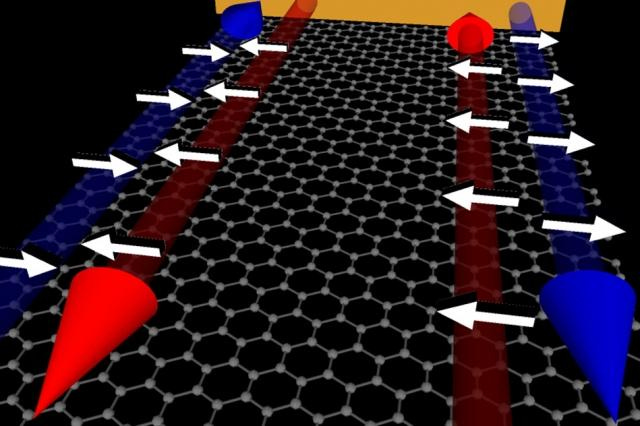Although the concept of quantum computers has been known for several decades, practical realizations are still lacking. The main limiting factor has been the critical influence of the environment on a qubit. Most physical systems need to be in perfectly controlled conditions in order to remain in the superposition state, whereas any interaction (mechanical, thermal, or other) with the environment perturbs this state and ruins the qubit. Such perturbation is termed “decoherence” that has plagued many potential qubit systems.
Over the last decade or so computer chips size has decreased 312.5 times from 10 microns to today’s 7nm. But the shrinking chip size is bumping up against Moore’s Law. Since chip companies including Intel and AMD hit 32nm, the progress has only gone anther 3 times or so to 7nm processors. These fabs are subject to Dennard's Law or Dennard's MOSFET scaling which says you can double the number of transistors, but keep the energy consumption of those chips the same. To go around of Dennard’s law, researchers will need a new material will have to replace Silicon to get us ever smaller and more powerful computer chips.
Since chip makers reached the 65nm range, it was discovered that smaller chips required more power do to power leakage that increases inversely to the size of the transistor! Heat becomes the enemy! To go around of Dennard’s law, and beat the heat, researchers will need a new material will have to replace Silicon to get us ever smaller and more powerful computer chips.
Graphene appears to have superior thermal conductivity over silicon by a large amount. Graphene can handle watts between 3,000-5,000 watts per meter Kelvin at room temps while traditional silicon is a paltry 148! One way to beat the heat is to mix graphene with copper to help dissipate the processors heat, thus increasing performance while operating at higher terahertz frequencies. One roadblock to ubiquitous graphene adoption is that not enough research has been conducted on graphene’s bandgap to make logic circuits.
Silicon, for instance, is used as a semiconductor because it has the ability to conduct or insulate depending on energy. So at low energy electrons cannot flow, but if you increase the energy just enough to push the electrons through the so-called conduction band, it allows them to flow free like a conductor. This is a very simplified explanation of how transistors work.
A few ways researchers are looking at to create the band gap in graphene is using negative resistance. This is when current passes through graphene, causing voltage drop, which is called negative resistance. This approach will allow researchers to create an X or a gate with only three graphene field effect transistors. Whereas with conventional silicon wafers around eight or more.
From this, you get two things. Not only you can go smaller with logic gates, but graphene can operate at much higher frequencies and in theory could reach at least 400 gigahertz. This number comes from the experiment conducted with a single graphene transistor that clocked at 427 gigahertz. This is why the magic angle of bi-layer graphene is so important because the angle alignment switch can effectively change the state from insulator to conductor, and therefore some sort of band gap can be done.
Researchers posit that within 5 years or so graphene chips will hit the market that are at a minimum of 10 times more powerful than traditional silicon chips. That being said, the graphene chip won’t have as many transistors so perhaps graphene chips run better, but not able to crunch as much data.
Recently in 2019, a team led by Irati Alonso Calafell proposed a way to use graphene to make very difficult to make quantum computing. Why go with quantum computers? Simple, silicon chips are binary, 1’s and 0s, on, or off. Quantum computer chips can be in two places at once. That’s called superposition.
But just like conventional computers, quantum computers will need logic gates to measure and/or alter the state of them.
Irati Alonso Calafell (University of Vienna, Austria), in a recent article for Nature, proposes a way to use a graphene nano plasmonic quantum swap logic gate. I know it's a mouthful. This gate relies on the Zeno effect, also known as the Turing paradox, which basically means, from Wikipedia, is a feature of quantum mechanical systems allowing a particle's time evolution to be arrested by measuring it frequently enough with respect to some chosen measurement setting.
So in this case, two layers of graphene are used to help quantum computers that operate at room temperature! Debunking theories that quantum computers could only work in super-cooled environments or cryogenically.
Graphene, having spurred research into numerous novel directions, is naturally also considered as a candidate material host for qubits. For example, back in 2013, a team of researchers from MIT found that graphene can be made into a topological insulator – meaning that electrons with one spin direction move around the graphene edges clockwise, whereas those that have the opposite spin move counterclockwise.
Image Courtesy: Graphene spin qubit, MIT. Graphene can host exotic new quantum electronic states at its edges.
They made this happen by applying two magnetic fields: one perpendicular to the graphene sheet, to make the electrons flow at sheet edges only, and another parallel to the sheet, that separates the two spin contributions. Electron spin has long been considered a candidate qubit, because it is inherently a quantum system that is in a superposition of states. In graphene, the spins move along the sheet edges robustly, without much decoherence. Furthermore, the same research showed switching the spin selection on and off, an important feature of q-bit transistors. Nevertheless, extreme conditions such as strong magnetic fields and temperatures near absolute zero are required for this effect in graphene, raising questions about real-world applicability.
Don't hesitate to subscribe if you haven't already done so.
Regards and take care.
Born in 2012, Scixel is a project devoted to the improvement of the scientific comunication through the creation of graphical products: pictures, animations, graphs, posters, etc. Scixel consists of scientists with a deep knowledge in digital graphics but also with a long experience in giving talks, preparing posters and papers and other daily situations of scientific work.
We have focused our work into universities and research institutes all over the world: TuDelft (The Netherlands), NIMS (Japan), Basel University (Switzerland), Universidad Autónoma de Madrid, CNB or ICFO (Spain), to name a few.
Web: https://scixel.es/
If you are a company or an individual who would like to place your advertising in my newsletter you can contact me (email) and let me know your request of type of ad and number of newsletters you would like to place it. I will send you a budget as soon as possible.






